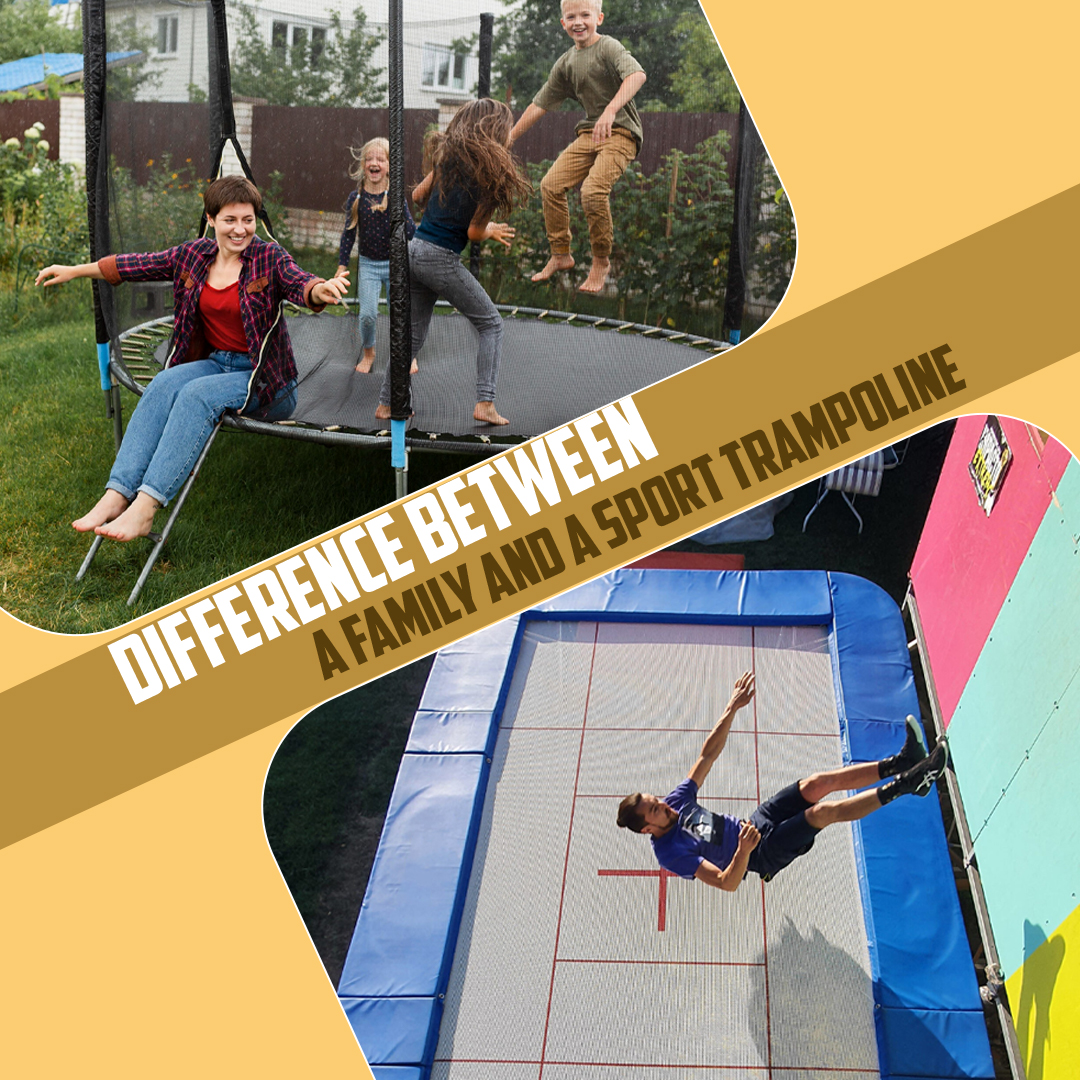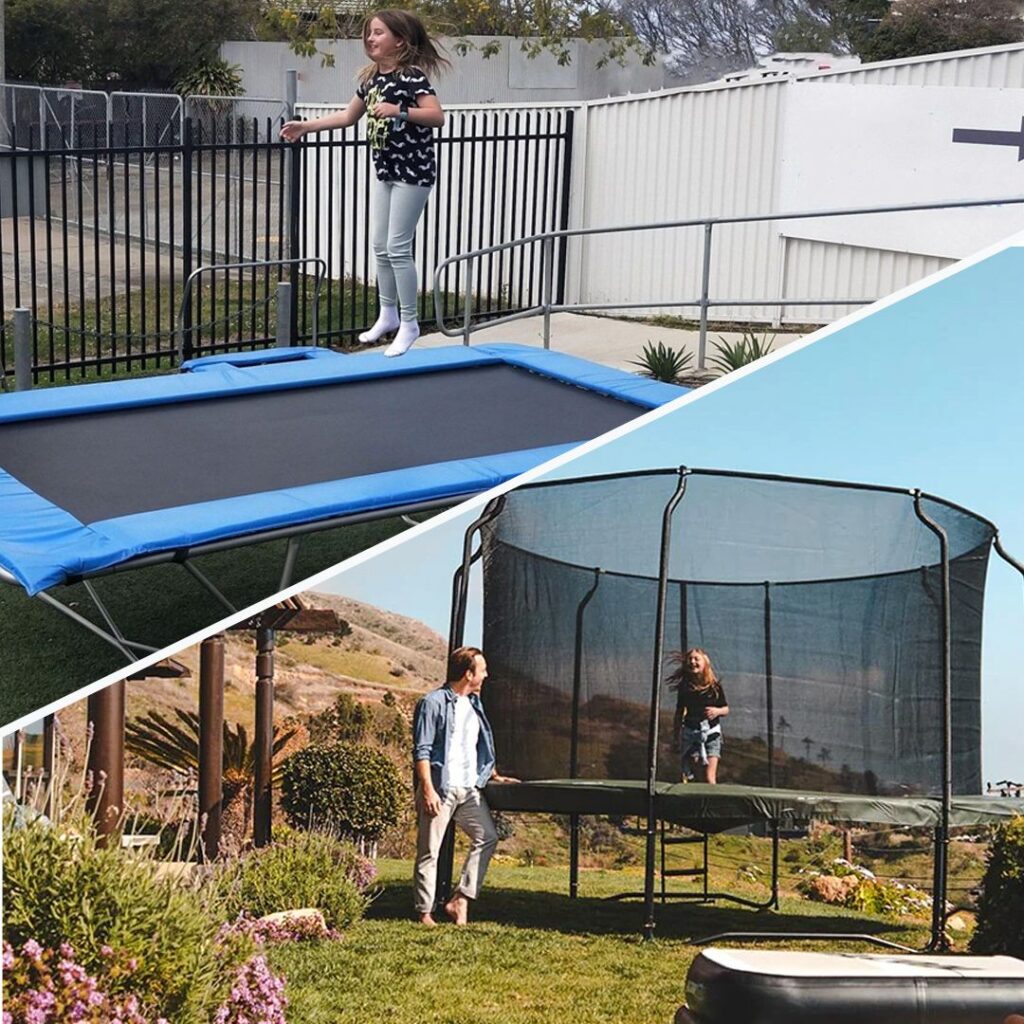
The UK has seen steady growth in the trampoline industry over the last decade. Trampolines come in two main types: family trampolines and sport trampolines.
While both types will let you bounce freely, they’re designed with different aims in mind. A family trampoline prioritises safety and accessibility so the whole household can join in the fun. A sports trampoline offers advanced features for gymnasts and athletes to perfect their skills.
In this blog we will be discussing how family trampoline is different from the sport trampoline and how to choose between the two.
Exploring Family Trampolines
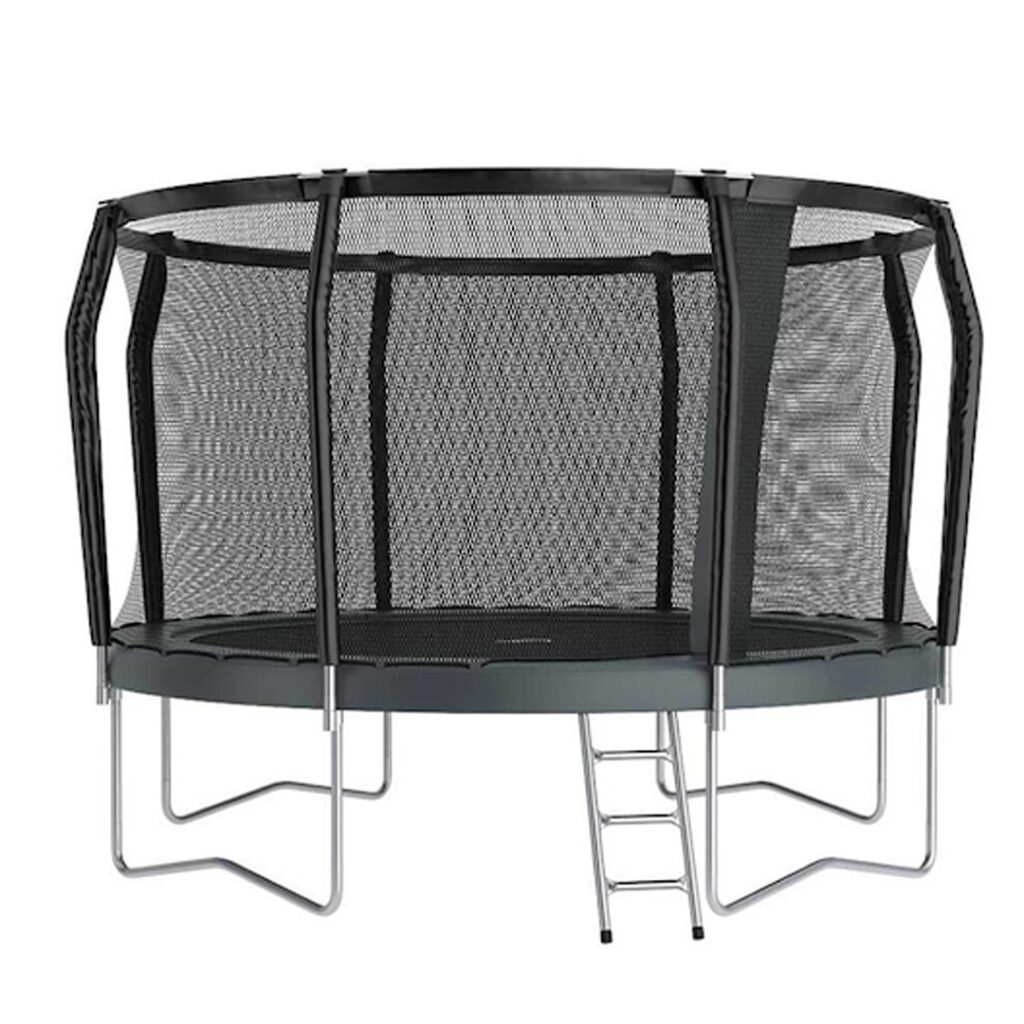
A family trampoline is designed for recreational use by people of all ages and skill levels. It has a large jumping surface, safety padding and enclosure netting to prevent falls. The springs are also specially designed to provide a softer, more forgiving bounce. Family trampolines emphasise safety, accessibility and ease of use.
Intended use and target audience
Family trampolines are ideal for casual jumping by children and adults alike. A 12ft trampoline is perfect for low-impact exercise, recreation and fun. The target audience is families, older children, teens and adults looking for a fun way to stay active in their garden.
Design elements
Family trampolines incorporate several design features to maximise safety and accessibility. These include:
- Safety padding: Thick padding covers the springs and frame to prevent injury on impact.
- Enclosure netting: A mesh net surrounds the entire trampoline to prevent falls.
- Low entrance: The trampoline bed is at ground level or only slightly raised for easy access. Ramps or ladders may also be provided for those with mobility issues.
- Weight limits: Family trampolines have a high maximum weight capacity, typically around 150 to 350 kg to accommodate multiple jumpers.
Safety considerations
With the proper safety precautions and supervision, family trampolines can be enjoyed by all.
- Proper adult supervision is required, especially for smaller children.
- Safety padding and enclosure netting should be properly installed and maintained before jumping.
- No somersaults or flips are permitted. Only basic jumping is allowed.
- Remove jewellery and tie up long hair before jumping to avoid entanglements.
- Ensure the trampoline is on level ground and anchors or tie down ground anchor kits are securely in place.
- Follow the safety tips provided in the trampoline manual.
In summary, family trampolines are designed with safety, fun and accessibility in mind so the whole family can enjoy some bouncing excitement together! By following the guidelines and recommendations, a family trampoline can provide years of entertainment and activity for all ages.
Understanding Sport Trampolines
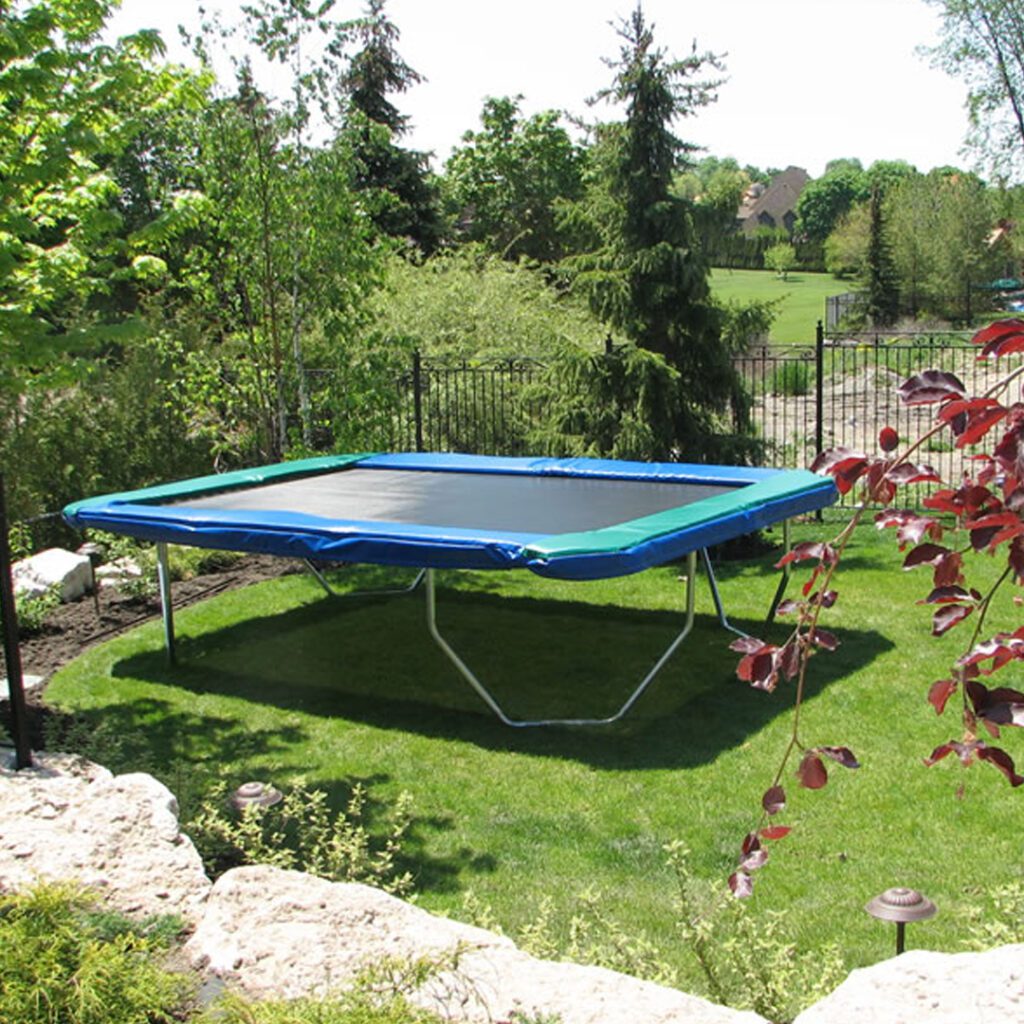
A sport trampoline is a recreational trampoline designed for skilled trampolinists and athletes. It has a sturdier construction with a stronger, more rigid frame and mat, and higher performance springs to provide more bounce and lift for aerial skills. They are suitable for a single user at a time.
Purpose and Target Audience
The purpose of a large 14ft trampoline is to enable gymnasts and athletes to practise aerial skills with a high degree of difficulty. They are targeted at competitive trampolinists, gymnasts, divers, cheerleaders and others training for their sport. Recreational users may also enjoy the added challenge and thrill of a sport trampoline.
Features and Specifications
Sport trampolines are typically larger in size, from 12 feet to 16 feet in diameter. They have a minimum of 96 high-performance steel springs, with some models having well over 100 springs. The frame is made of galvanised steel and the mat is reinforced for impact. Safety pads cover the springs and a net surrounds the trampoline for fall protection.
Safety Considerations
Although sport trampolines have more safety features, there is still risk of injury due to the height of bounce and difficulty of skills. Proper safety gear like helmets, wrist guards and knee pads should always be worn. Only one person should jump at a time, and spotters should be present. The trampoline should have padding, netting in good condition and be properly secured to the ground. Skills should only be attempted under the guidance of a certified coach.
Following the guidelines and taking recommended safety precautions will help ensure you have an enjoyable experience jumping on your sport trampoline. While family trampolines can still provide plenty of fun, sport trampolines open up a whole new level of aerial adventure and skill building for the serious athlete and gymnast.
Key Differences between Sport and Family Trampolines
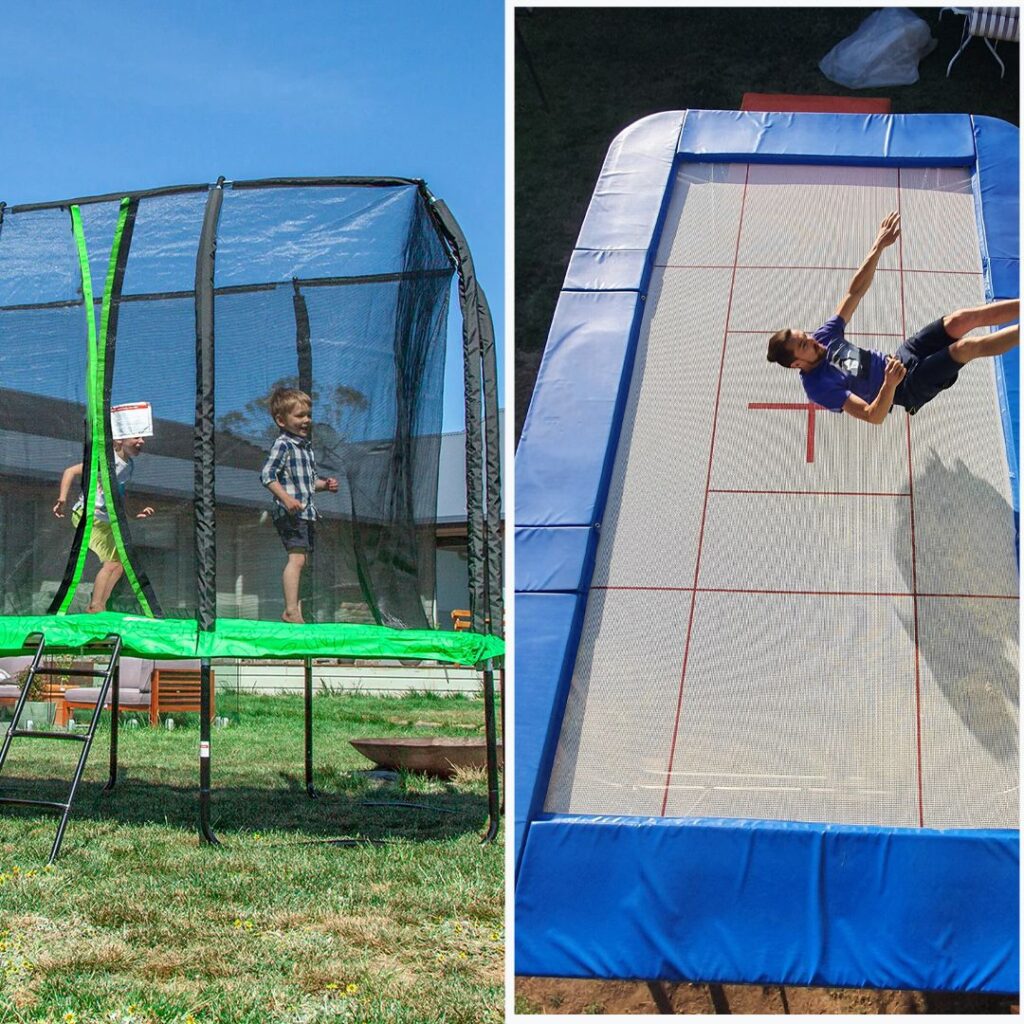
Family trampolines are designed for casual recreational use by children and adults. They typically have a lower bounce and are focused on safety. Sport trampolines are high-performance models geared toward competitive gymnastics training and freestyle aerial manoeuvres. They feature a tighter bounce for more height and control.
Design and Construction
Family trampolines typically have a round frame with 6 to 8 legs for stability. The trampoline bed is usually made of polypropylene mesh with padding around the springs and frame. Sport trampolines have a sturdier square frame with overhead padding for practising twists and somersaults. The mat is high-tension polypropylene for maximum bounce. The springs are heavy-duty for higher performance.
Safety Features and Regulations
Family trampolines follow strict safety standards with fully padded frames, spring covers, safety nets, and weight limits. Sport trampolines also have substantial padding and nets but are built to withstand the impacts from competitive skills. They may require coaching certification and insurance for training facilities.
Cost Considerations
You can expect to pay between £200 to £500 for a high-quality sport trampoline, depending on the size and features. Sport trampolines typically start around £1,100 and can cost £2,000 or more for a professional competition model. The investment provides a much higher level of performance and durability for intensive training and use.
Choosing the Right Trampoline for Your Needs
Budget
The first thing to consider is how much you want to spend. Family trampolines typically range from £200 to £700, while competition trampolines start around £1,000 and can go up to £3,000 or more for elite gymnastic models. Think about how much use your trampoline will get to determine if an investment in a higher-end model is worth the cost.
Space
Make sure you have adequate space for the size of trampoline you need. Family trampolines usually need at least 6 metres of clear space around the trampoline. Competition trampolines require even more space due to their larger size. Measure your garden to ensure any trampoline you choose will fit comfortably and safely.
Intended Use
Consider how you plan to use the trampoline. Family trampolines are designed for casual bouncing and simple jumps, while competition trampolines are built to handle more advanced skills like flips, twists and aerials. Competition trampolines have stronger, more responsive bounce pads and frames to support these activities. They also typically have larger bounce surfaces, often 8 feet or more in diameter.
Safety
For maximum safety, choose a trampoline designed for your intended use. Family trampolines typically have more padding, net enclosures and lower weights limits, while competition trampolines are designed for skilled athletes. Consider accessories like safety pads, nets and anchor kits for any trampoline. Properly securing your trampoline can help prevent injuries from falls and collisions.
By considering these key factors before you buy, you can choose a trampoline that suits your needs, space and budget. Focus on safety, quality and intended use to find a trampoline that will provide years of enjoyment.
Conclusion
While family trampolines are great for casual garden fun with the children, sport trampolines offer advanced bounce and performance for gymnasts and athletes. Either trampoline will get you leaping with joy, but think about who’ll be jumping and how high when deciding which is best for your home. And if you’re still bouncing between options, visit our store to try out our quality trampolines in person.

